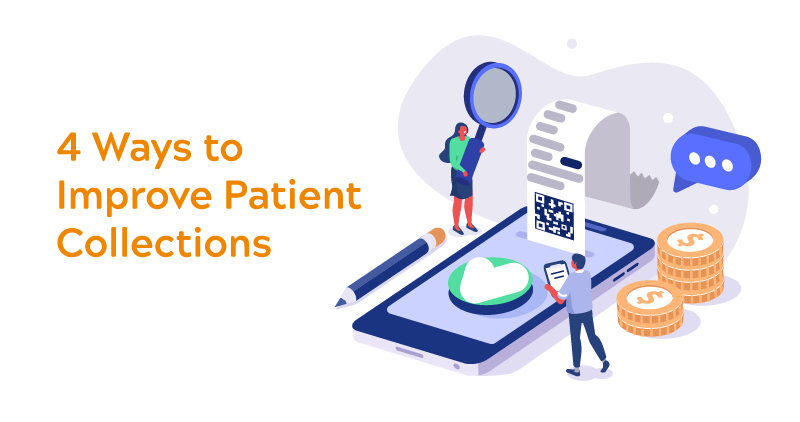Why Patients Are Slow to Pay
Anxiety. Confusion. Frustration. These are just some of the words people use to describe the way they feel about paying their healthcare bills. And to be honest, the billing and collections process for healthcare providers and revenue cycle management companies (RCM) is extremely complex.
But this lack of transparency and complexity has a negative effect on patients’ willingness to actually pay their bills. Instead, patients are more likely to avoid answering the phone or to simply leave mail unopened or in the ‘to do’ pile rather than taking action.
Patients don’t want to engage with the collections process because they don’t understand it. What’s even worse is that 62% of patients report being surprised by out-of-pocket costs. As a result, patients often put off paying in a timely manner, which forces revenue cycle management companies (RCM) to devote even more resources to collections, all with diminishing returns.
Paying a Premium for Collections
Revenue cycle management companies (RCM) face challenges with collections tied to the common process of trying to collect patient AR by sending paper bills and making follow-up phone calls. Costly and ineffective processes that do not produce results. This approach fails to capture people’s attention and has negative effects.
Late payments are very common and the problem is only getting worse. 73% of providers report that it takes one month or longer to collect from patients. Furthermore, in 2016, 68% of patients failed to fully pay off medical bill balances, and that number is projected to increase to as high as 95% by 2020.
When patients don’t pay in a timely fashion, i.e., when the number of accounts receivable (AR) days surpass 180, outstanding bills typically get referred to a third-party collections agency. This simply exists as another cost to the provider and reduces the net value of any late payments. It’s no surprise that it costs healthcare providers four times more to collect from a patient than it does to collect from an insurance company.
Closing the Frustration Gap
Lack of understanding and frustration with the payments process are two factors that demotivate patients from paying their medical bills on time. Engaging with the payment process requires more time and effort than most people are willing to invest.
Ultimately, it doesn’t make sense to continue to invest in communications and collections programs that frustrate and confuse patients. Instead, addressing and fixing those communications breakdowns can transform patient engagement in the collections process.
Re-Thinking Collections
A new approach to collections is required to increase engagement, decrease the cost to collect, and increase patient AR. A process that works for revenue cycle management companies (RCM) and patients alike.
There are a number of concrete steps that revenue cycle management companies (RCM) can take to have a patient-centric collections process that can focus on communicating with patients in the right way.
- Find the right channel: How do people want to get information? Paper bills are confusing, expensive, and not eco-friendly. Email and digital patient portals give you a lot more flexibility with how you communicate with patients.
- Find the right time: Timing is everything, so ensuring that patients get billing information at a point in time when they can devote the most attention to it is key to reducing frustration and confusion.
- Simplify: Both Explanation of Benefits (EOBs) and bills typically contain highly specialized language that leaves the lay person scratching their head. “I was there for an hour and never had a venipuncture!” they might say, when in reality that’s just a blood draw. Take the time to include plain English explanations of procedures so that patients can easily correlate their care experience with their bill.
- Provide payment options: Offering multiple modes of payment is standard, e.g., credit card, ACH, etc. However, medical bills can get big quickly. Many Americans struggle to afford an unexpected $400 expense. Providing and automated payment plans that allow patients to break big expenses into small ones encourages patients to take action sooner on their medical bills. Bonus points if patients don’t have to manage that plan and it automatically charges their account at a specified interval.
Delivering these kinds of personalized communications reduces patient confusion and frustration with the billing process, which makes it easier for patients to actually pay their medical bills sooner.



